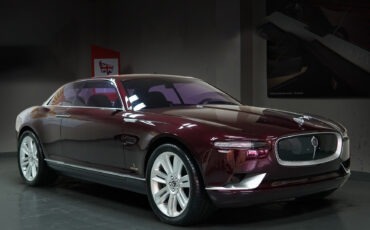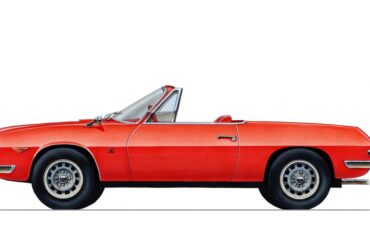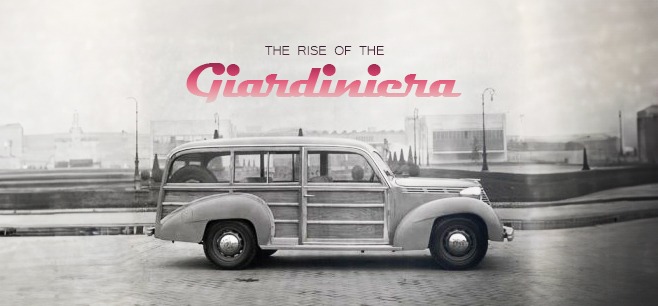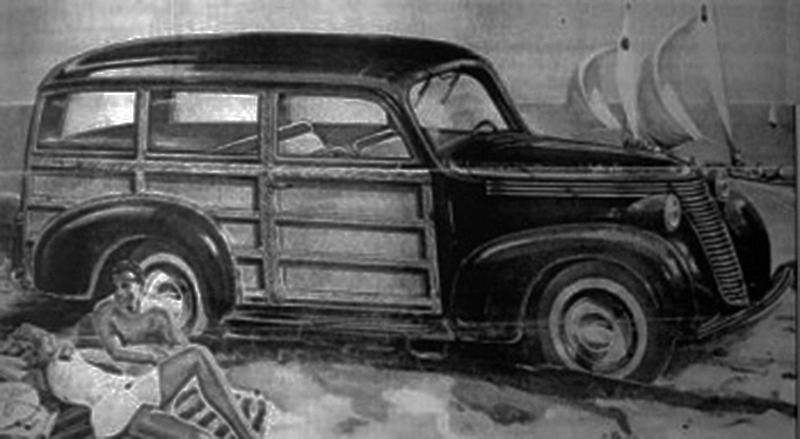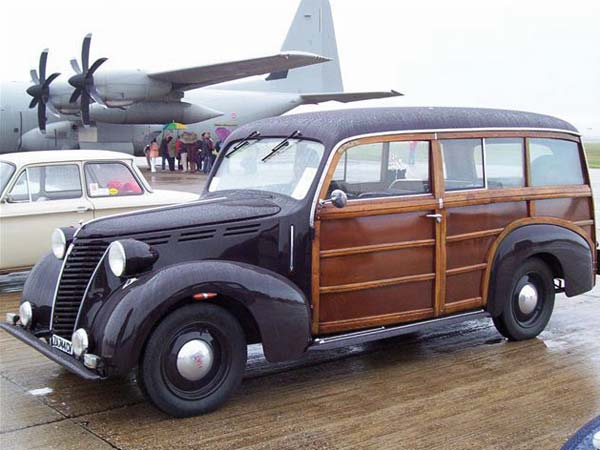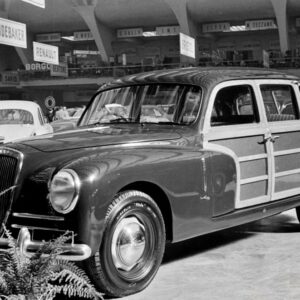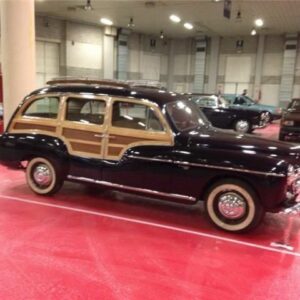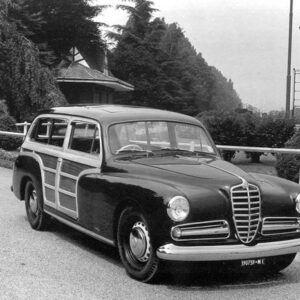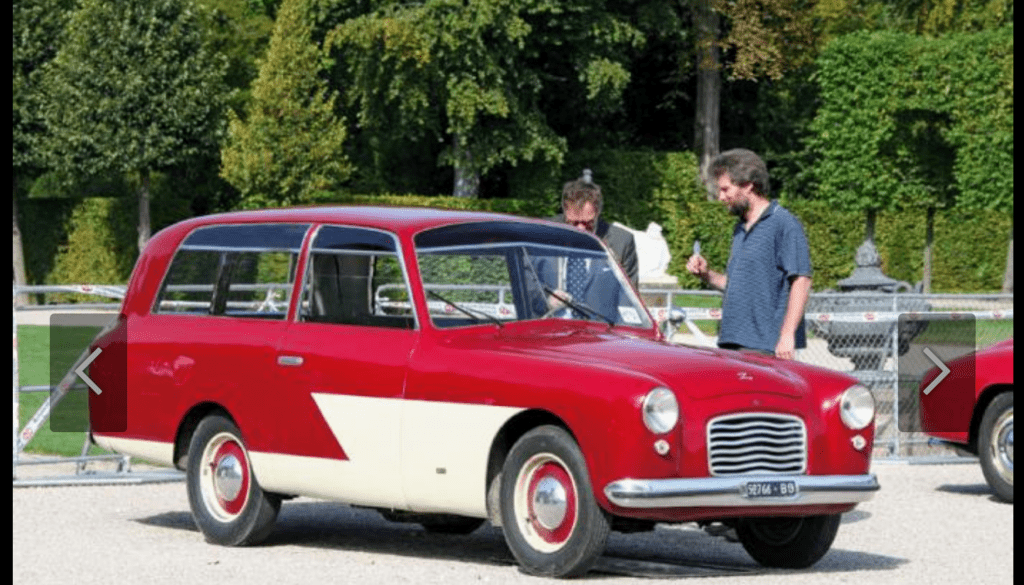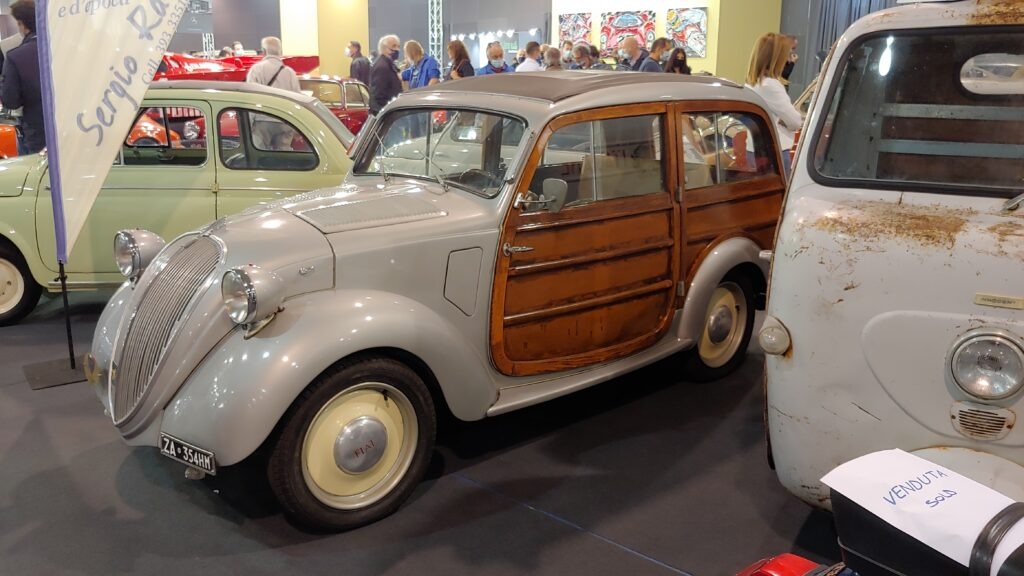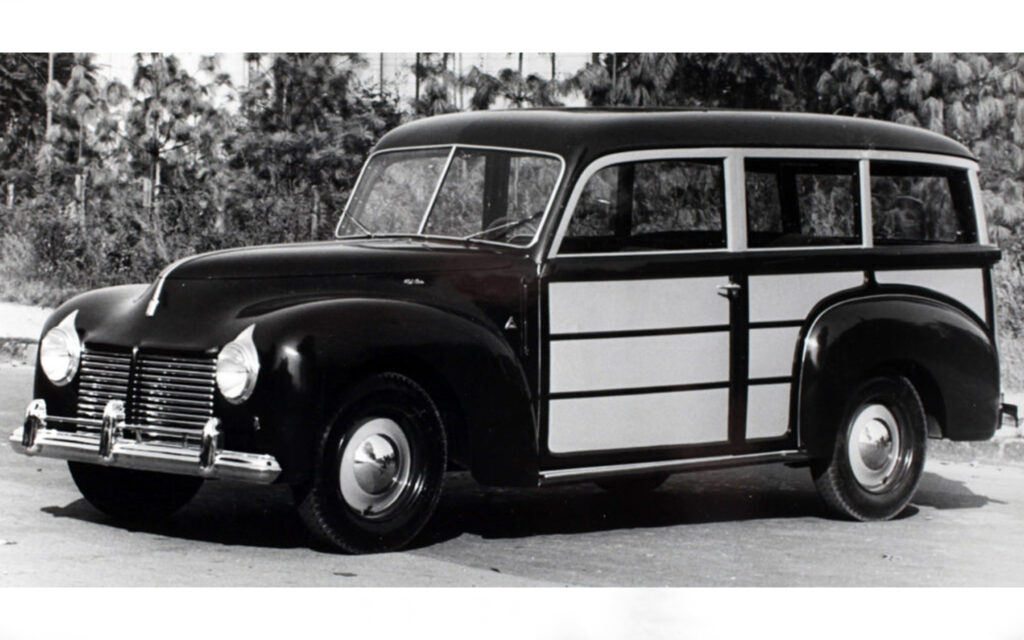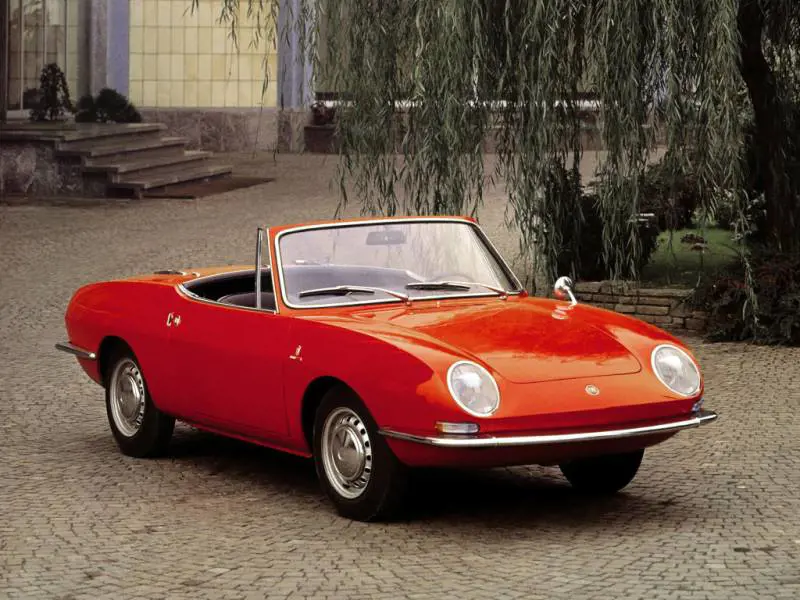
The origin
During the 1950s and 1960s, the main projects of Fiat’s company were entrusted to Dante Giacosa. His ingenuity gave birth to some of the most famous small cars: the “Topolino,” the “600,” the “500,” and the “850.” All of these cars made history for the Fiat brand and contributed to the motorization of Italy (and beyond) from the postwar period until the early 1970s when the oil crisis began to appear. In 1951, engineer Giacosa was called upon by top management to develop the “100” project. From that project, the “600” and “850” were born in sequence. The “600” made its debut in March 1955, drawing a clear line with the past by introducing innovative concepts, such as independent-wheel suspension and water cooling, which were previously unthinkable on a small car. Additionally, it was a “true” four-seater.
Nine years later the same team led by Dante Giacosa made the “850,” a natural evolution of the “600” especially in mechanics. The engine is the evolution of that of the “600” but the displacement increases and consequently the performance increases, the new Fiat house hatchback is more spacious, allows to carry five passengers and in the rear features a small overhang, losing the rounded shape of the rear of “500” and “600”.
The following year, we are in March 1965, Fiat surprised everyone a bit by presenting at the Geneva Motor Show two sport versions derived from the Fiat “850,” a Coupé and a Spider. The Coupé was developed by Fiat designers and workers, while the design and construction of the Spider was entrusted to the well-known “Carrozzeria Bertone” led by Nuccio Bertone.
The Fiat 850 Spider first series
In March 1965, the Fiat “850 Spider” took center stage at the Geneva Motor Show, captivating the audience. This new Spider, a result of the collaboration between Fiat and “Carrozzeria Bertone,” surprised onlookers with its front end, reminiscent of Bertone’s previous experimentation with the Corvair “Testudo”. Additionally, the headlights bore a striking resemblance to those of the renowned Lamborghini “Miura”. The sleek side profile, accentuated by the dihedral shape, seamlessly led the eye towards the flat, truncated tail. At the rear, two headlights, identical to those of the Lamborghini “Miura,” were housed alongside an aluminum-colored mock ventilation grille. The spider’s design was further enhanced by blade bumpers without visible bolts, chrome-plated door opening buttons, and rear hood hinges. These details contributed to the clean and streamlined appearance befitting a true sports car.
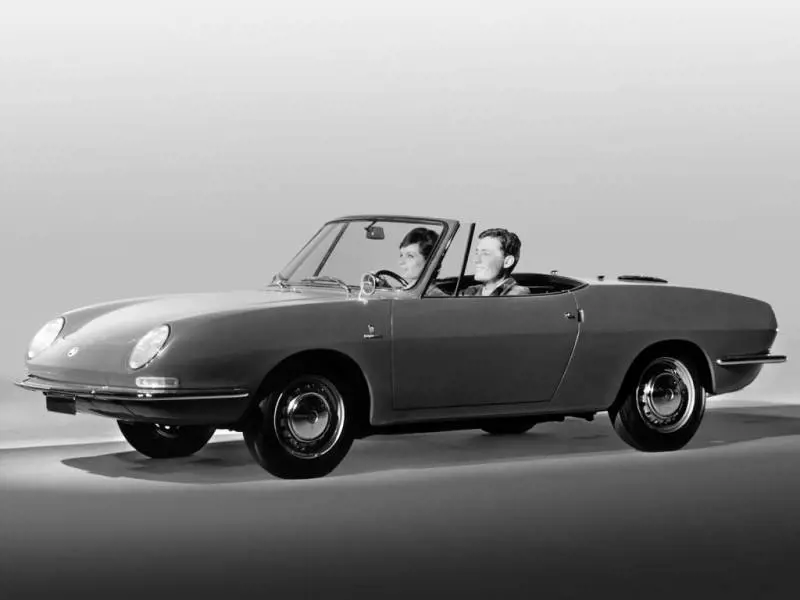
The car’s exterior was defined by the presence of two headlights positioned on the fenders. Additionally, the front turn signals and position lights were integrated into a single two-tone light located on the front corner of the car. The fenders featured the “Carrozzeria Bertone” logo, which consisted of a shield and the word “Torino” on a checkered background. The left fender also housed an outside rearview mirror, adding a touch of elegance to the car. The rear hood displayed the car’s name, “850,” beneath the “Fiat” laurel. The license plate lights were cleverly placed within two slots on the rear bumper.
Also in the creation of the interior, “Carrozzeria Bertone” managed to make a small masterpiece. Instrumentation consisting of five circular instruments, two larger ones: speedometer and tachometer and three smaller ones: water temperature, fuel level and oil pressure. In the central part was placed the ashtray and three controls: picture light intensity adjustment, windshield wiper speed and lighter.
On the right side of the dashboard, a passenger grab handle was installed along with the lock for the glove compartment. Inside the glove compartment, the control for opening the front hood was located. Additionally, the “Torino” logo was applied on the same panel. On the left side of the dashboard, there was a designated space for four levers. These levers were used to control the position lights, panel light, passenger compartment light, and windshield wipers respectively. The control for the windshield washer was delegated to a pedal pump situated behind the clutch pedal. The steering wheel featured a black crown and two slightly convex, chromed metal spokes. It also had a horn button with the lettering “Fiat”. The passenger compartment heating system included a dedicated radiator. The controls for this system consisted of two levers located in the central area at the bottom of the dashboard. These levers allowed adjustment of the air flow and temperature. The system was further equipped with an efficient fan that could direct air either through two rotatable vents in the upper part of the dashboard or through special vents in the lower part of the dashboard.
The seat upholstery and interior trim were crafted in varying hues, corresponding to the body color. However, the cockpit floor covering remained consistent with black rubber mats, boasting a checkered texture and sleek edges. This particular choice garnered some disapproval from critics who desired a more sophisticated alternative. The seats, equipped with a screw at the base for adjustment and forward tilting of the backrest, showcased longitudinal stitching along the central section of both the backrest and seat.
The lower part of the door panels had a sleek appearance, while the middle section featured faux oblique seams. These panels were frequently dual-toned, with the smooth top usually sporting a different color compared to the rest. As for the rear side panels, they were crafted from smooth skay material, while the rear bench seat was elegantly adorned with longitudinal seams.
The Fiat 850 Sport Spider (2nd series)
In March 1968, Fiat unveiled the revamped “850” range at the Geneva Motor Show. The sedan was now available in both “base” and “Special” versions, while the coupé and spider models received the designation “Sport” in their official names. This marked the introduction of the “850 Sport Spider” to the market. The overall design of the line remained unchanged in the central and rear sections, but the front end underwent modifications. The headlights were now recessed in the fenders, and the turn signals were housed beneath the bumper, which was equipped with protective rostrums. The cabin, similar to the first series, offered a cozy environment and featured a range of instruments designed to assist the discerning driver. The steering wheel boasted two perforated spokes, with the Fiat logo positioned at the center, serving as the horn control.
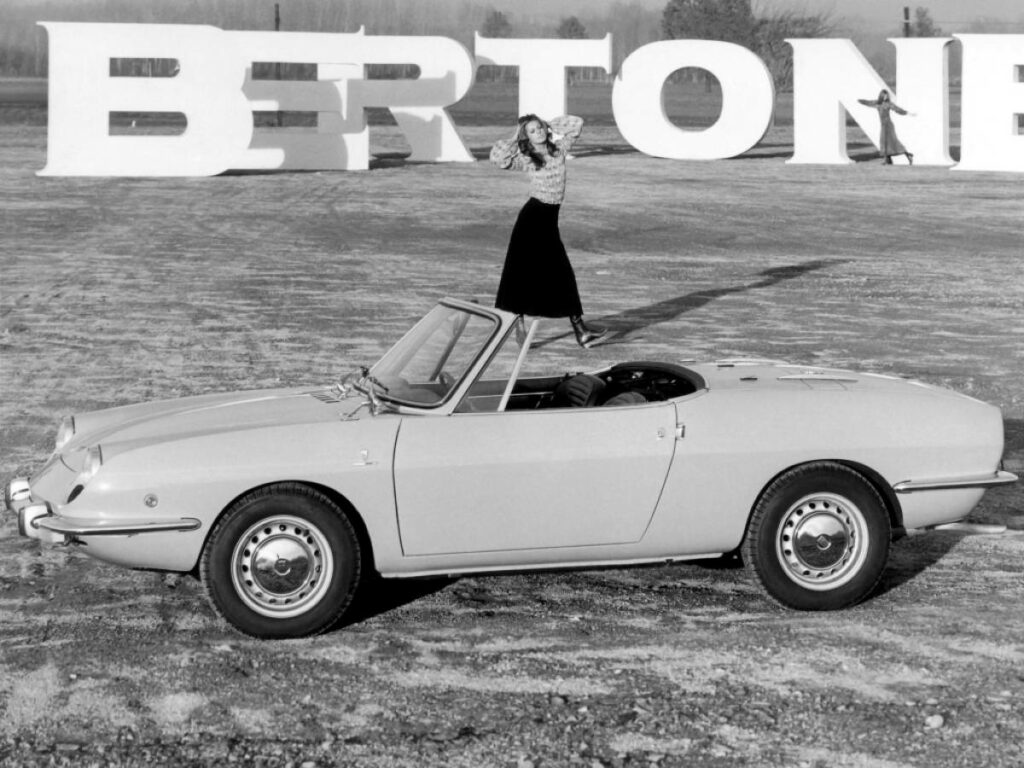
Several mechanical innovations were done: displacement (thanks to an increase in piston stroke value) increases from 843 to 903 cc. and power rises from 49 to 52 hp. Other changes include valve seats made of stronger material and an aluminum oil pan. The electrical system is provided with an alternator that replaces the old dynamo. The tires are increased in size (155) to give the car more stability. The Fiat “850 Sport Spider” thus confirms the success of the previous model. The increase in power, thus in performance, and the successful line designed by Bertone, place it at the top of the category, both from a strictly technical point of view and from the emotional aspect. The “850 Spider” remains in the history of Fiat one of the most sympathetic and fascinating cars; even today, those who are fortunate enough to own an example of this car know how much it arouses admiration and appreciation even in the eyes of non-enthusiasts.
The Fiat 850 CL (Convertibile Lusso)
During the unveiling of the Fiat “850 Spider” at the Geneva Motor Show, “Carrozzeria Bertone” showcased a unique specimen on their exhibition stand. This particular model differed slightly from the official Fiat version, boasting more refined finishes and a more luxurious interior trim. This prototype served as a preliminary glimpse into what would eventually evolve into the C.L. (Convertibile Lusso) version, exclusively crafted by Bertone itselves. The Fiat “850 Spider C.L. Bertone” effectively fulfilled the desires of those who believed that the Fiat “850 Spider” lacked a certain level of opulence in its finishes.
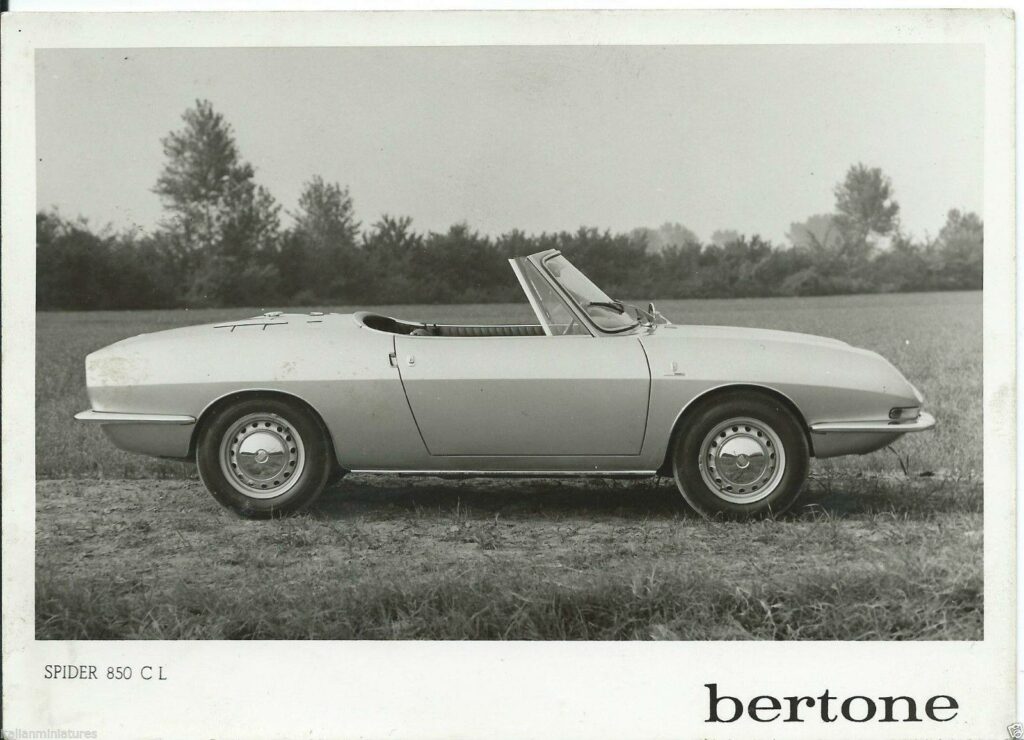
The Fiat “850 Spider C.L. Bertone” boasted a distinct exterior compared to the Fiat “850 Spider.” It featured chrome profiles at the wheel arches, with additional chrome accents along the lower part of the side. At the rear, the fake grille between the headlights was replaced with a body-colored panel adorned with chrome plating enclosing the initials “CL.” Carrozzeria Bertone, responsible for this unique Spider version, expanded the color options, predominantly offering metallic shades. Furthermore, the list of optional accessories was enhanced, providing customers with more choices.
The Fiat 850 Racer
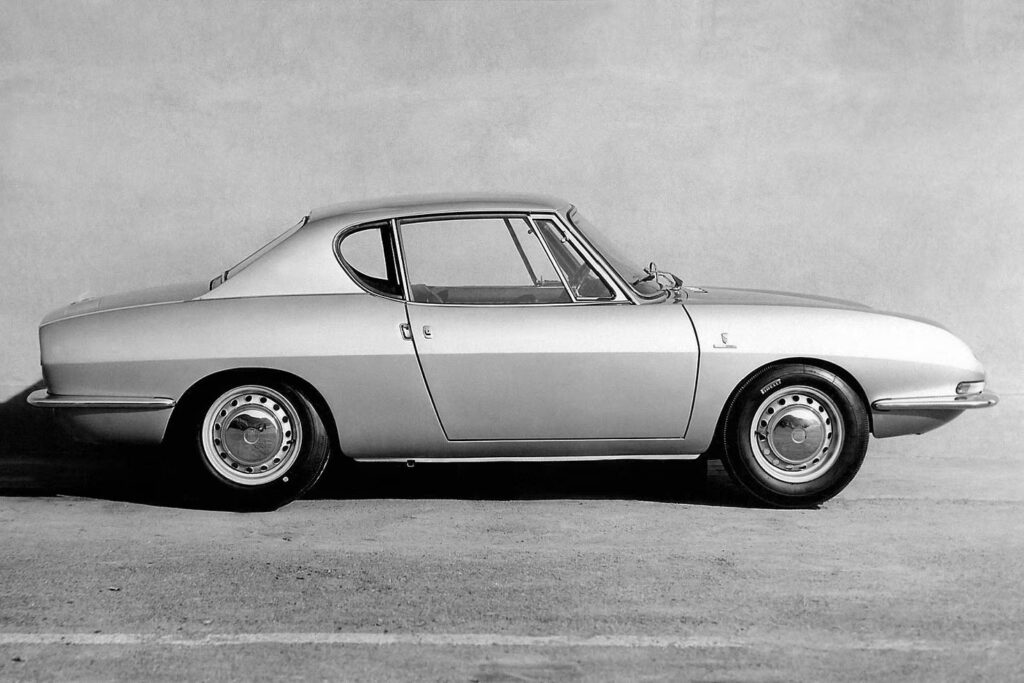
In the case of the first series, the C.L. version of the Fiat “850 Spider” had some variants made and marketed by “Carrozzeria Bertone”. However, with the second series, “Carrozzeria Bertone” not only aimed to give its own version a more elegant touch, but also wanted to incorporate a sporty element, evident from its name: “Racer”. The “Racer Berlinetta“, “Racer Convertible”, and “Racer Team” were specifically created. The “Berlinetta” was a true coupe, featuring a metal roof covered with vinyl material instead of a soft top. This roof was not a removable hard-top, but rather an integral part of the body, securely bolted on. The “Convertible” replicated the previous experience with the C.L. version, with improvements in trim and overall aesthetics compared to the official version. As for the “Team”, “Carrozzeria Bertone” aimed to create a genuine sports car with design elements that showcased its racing ambitions. This included additional fog lamps, a contrasting longitudinal band along the entire body, and sporty interior trim.
The three versions of the “Racer” were distinguished from each other in different ways. The “Berlinetta” was a true coupe with a fixed roof and unique construction details that set it apart from the Spider it was based on. The roof was seamlessly integrated into the bodywork, taking the place of the band that housed the fuel cap, which was relocated inside the engine compartment. The “Racer” logo adorned the rear roof pillars, while the “Berlinetta” nameplate was affixed to the rear panel. Similar to the C.L. version, chrome trim was added to the wheel arches and along the sides. Among the three, the “Convertible” remained the most similar to the Fiat “850 Sport Spider” it was derived from. Only chrome profiles were applied on the exterior, similar to the “Berlinetta,” while the “Racer” nameplate was placed on the rear panel.
The “Team” was probably the maximum interpretation of sportiness and speed that could be extracted from a small Spider derived from a “normal” Fiat hatchback, daughter of that 100 project by Dante Giacosa. The main aesthetic feature was certainly the longitudinal band that ran along the entire body, also reduced to the essential were the bumpers made with only the rostrums at the sides of which, at the front, two additional headlights were placed; the rear bumper was, instead, made with two small blades without rostrums. The turn signals were made with the same two-tone lights already seen on the first series. The badges applied to the fenders were replaced by Bertone’s “b.” The lower part of the side was colored with a dark tint, instead, the cockpit pavilion, the same as that of the “Berlinetta,” was dyed in the same color as the car. On the sides of the roof, the words “Racer Team” were painted in place of the “Racer” nameplate. In the rear panel, the nameplate “Berlinetta” or “Racer” was applied.
The “Team” was probably the maximum interpretation of sportiness and speed that could be extracted from a small Spider derived from a “normal” Fiat hatchback, daughter of that 100 project by Dante Giacosa. The main aesthetic feature was certainly the longitudinal band that ran along the entire body, also reduced to the essential were the bumpers made with only the rostrums at the sides of which, at the front, two additional headlights were placed; the rear bumper was, instead, made with two small blades without rostrums. The turn signals were made with the same two-tone lights already seen on the first series. The badges applied to the fenders were replaced by Bertone’s “b.” The lower part of the side was colored with a dark tint, instead, the cockpit pavilion, the same as that of the “Berlinetta,” was dyed in the same color as the car. On the sides of the roof, the words “Racer Team” were painted in place of the “Racer” nameplate. In the rear panel, the nameplate “Berlinetta” or “Racer” was applied.
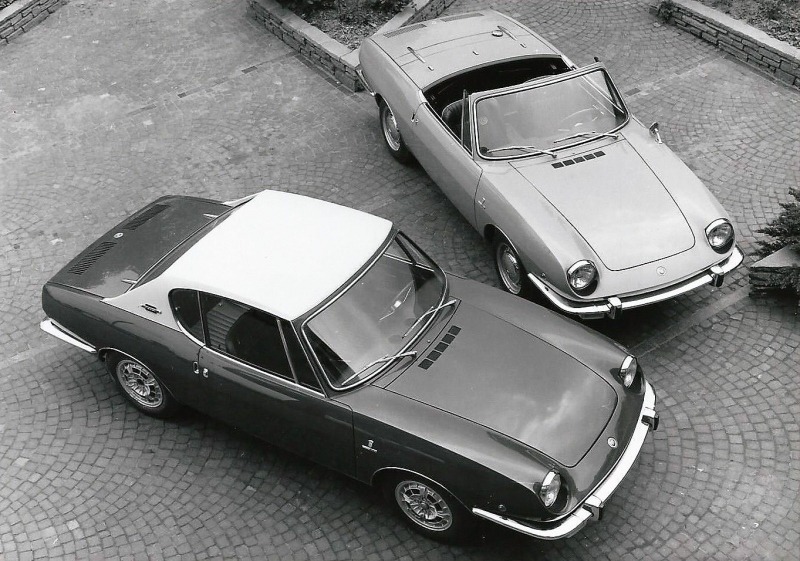
The interiors of the three “Racers” also differed in some details, however the entire dashboard remained common to the “Convertible” and “Berlinetta” variants. In this case, the lining of the dashboard panels was made of a material with relief texture, and the same steering wheel that had already characterized the “850 C.L.” version was applied.
For the “Racer Team” a more sporty feel was given by covering the dashboard panels with brushed metal plates, also a steering wheel with a wooden crown and three perforated spokes also made of brushed metal was applied. As was the case three years earlier with the C.L. version, a central tunnel was applied to the three “Racer” versions, which descended from the dashboard and ended with an armrest between the two seats. In the case of the “Racer,” however, no lock was applied to the armrest. It was possible to request the installation of the electric, analog clock in the front panel of the tunnel, but in the case of the “Racer Team,” the switch for turning on the auxiliary headlights and its indicator light were also located on the sides of the latter. In the lower part of the door rabbet were applied chrome heel bars with the engraving “Carrozzeria Bertone”.
The “Racer” versions of the interiors shared a common feature, which was the use of embossed weave fabric. This fabric covered various parts of the car’s interior, including the dashboard panels of the “Berlinetta” and “Convertible,” the center armrest door, the tunnel panel, the back of the seat backs, and the center seat and back area of the seats. The stitching on these fabric-covered areas had a longitudinal pattern that diverged at the end of the seat and backrest. Additionally, the seat backs were adorned with a chrome frame and two air intakes with chrome surrounds. The design of the seats in the “Racer Team” also reflected the concept of a racing car. They featured anatomical wraparound seats that seamlessly connected the back and seat, without any interruption. In the central part of the seats, the embossed weave fabric with transverse stitching was applied.
The three “Racers” featured a superior interior upholstery compared to the Fiat “850 Sport Spider” they were based on. The interior floor was adorned with bordered carpeting in different colors that matched the body color. The door panels showcased a distinct stripe-stitching pattern, with the “Racer” logo elegantly placed in the center. The rear panels boasted four horizontal stripe-stitching lines that seamlessly extended the door design. As for the “Berlinetta” model, instead of a rear bench seat, a genuine settee was crafted, providing ample space to accommodate two children.
The Fiat 850 USA
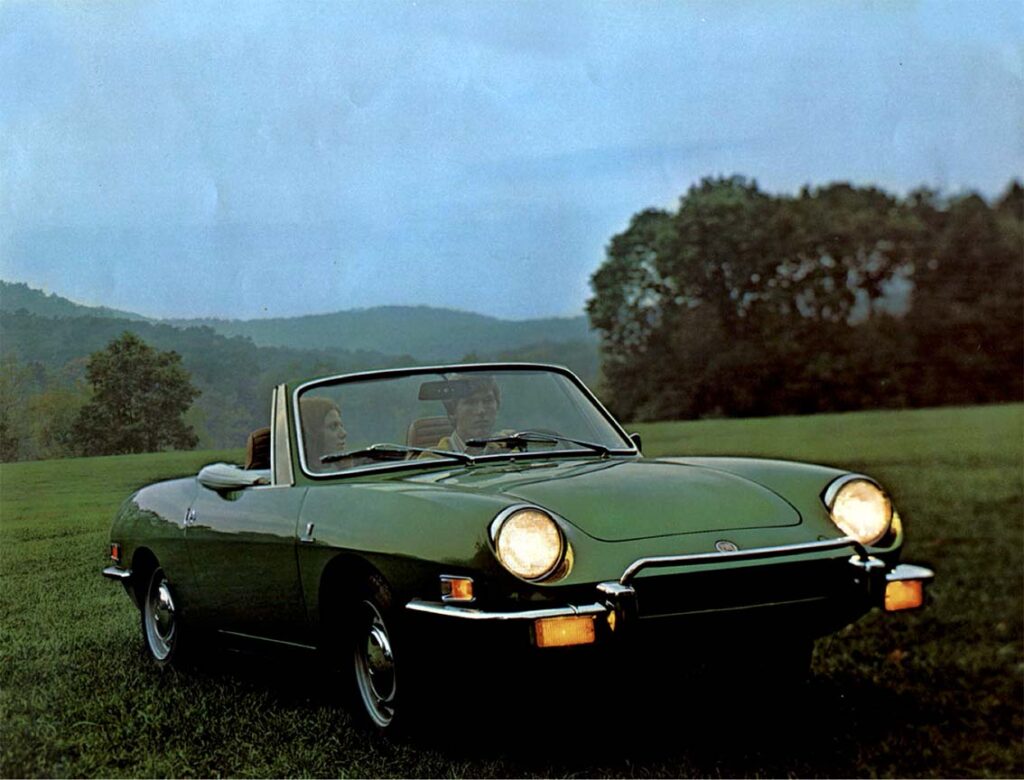
Following the successful introduction of the Fiat “850 Spider” in the U.S. market, it was decided to modify the car to comply with local regulations. This led to the creation of a special version known as the Fiat “850 Sport Spider.” The changes made to the car’s design included different bumpers, the addition of reversing lights, and reflectors. The efforts made by Fiat to cater to the U.S. market were well-received, resulting in an unexpected success. Approximately 100,000 units of the Fiat “850 Sport Spider” were sold out of the total production of around 130,000. This achievement demonstrated the competitiveness of the Grugliasco plants, where the cars were manufactured on their production lines under the supervision of “Carrozzeria Bertone.”
The “Spider” was immediately well received by both the public and the critics. The monthly magazine “Quattroruote,” which tested it in March 1965, extolled its good performance accompanied by not high fuel consumption, but even counted among its defects an excessively “important” line. In reality, the intervention of Carrozzeria Bertone on the line of the “Spider,” gave the car a personality that still arouses admiration today.

